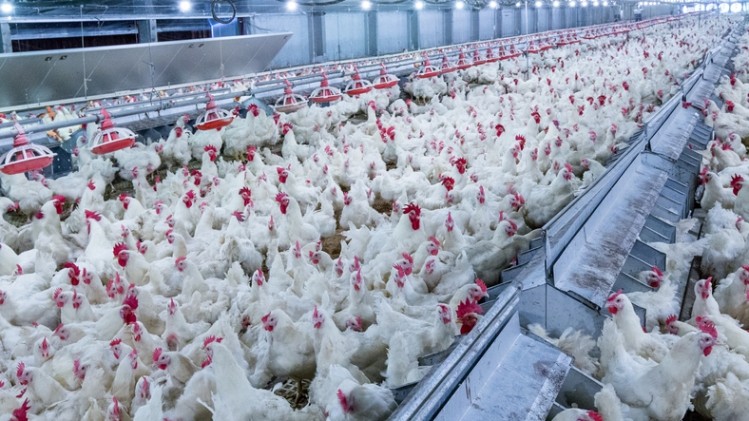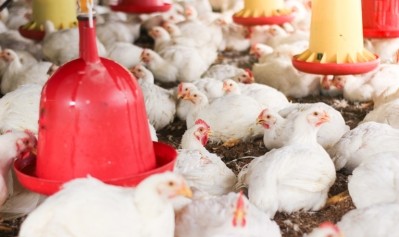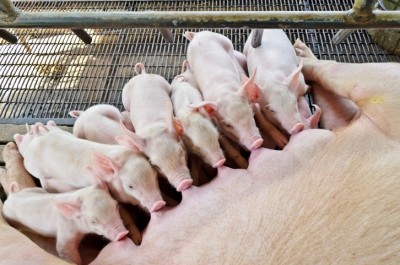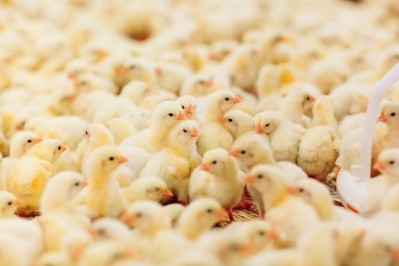special edition: Reports from IPPE
Blending broiler feed additives claimed to boost feed conversion

We spoke to Frances Yan, senior research scientist in poultry nutrition, Novus International, at IPPE last week to hear more about research she had presented at the Georgia event related to the use of blended essential oils and organic acids in broilers facing a disease challenge, in a feeding trial.
That trial examined broiler diet supplementation with varying levels of both organic acids and essential oils.
“Scientifically, when we looked at these two products we saw different modes of action,” she said. “[We thought that] if we could combine them together then, potentially, they could complement each other because they’re doing different things.”
Essential oil use has been linked to modulation of the immune system, improved adaptive response, better responses to vaccines and antioxidant capacity, she said.
“When we looked at our organic acid product, the majority of the response we saw was actually on the gut microbiota, reduced E. coli, reduced clostridia perfringens … and we also saw an increase in endogenous enzyme production, so, improved digestion,” she said.
A potential benefit from mixing the two type of feed additives would be to cover a larger range of challenges for producers and provide a more consistent result, Yan said.
“If you look at antibiotics they work most of the time, but if you look at these alternatives, they work some of the time, and it’s really difficult to understand,” she said. “If you combine them, you’re covering more ground.”
The Novus trial found that there was a response in birds when the additives were combined, she said. But the dose of the products needed to be altered for the best efficacy.
“We can reduce the dose and they still see the full benefits,” she said. “It definitely looks like a half dose of the essential oils, and a half dose of the organic acid gave us the best feed conversion ratio – we need both, but we don’t need the full dose of each.”
However, it was a surprise to find that the half dose of both additives outperformed the blended full dose, Yan said. “I would have expected them to work out similarly.”
“I would not say it is negative compared to the negative control, compared to nothing, but compared to the half dose control there are several parameters where it’s numerically worse than the half dose,” she said of the full dose blend. “The dose response of this type of product is pretty sensitive.”
Feeding trial and results
In that Novus broiler trial, 1,728 broiler chicks received one of nine diets for a 42-day period, according to the research abstract. Birds also faced a disease challenge from a large dose of coccidiosis vaccine.
The diets included a blended essential oil product that contained thymol and carvacrol at 0, 15, or 30g/ton and three levels of an organic acid blend comprised of protected benzoic acid, calcium formate and fumaric acid at 0, 250 or 500g/ton.
There were some questions about how large a dose of each of the feed additives would be needed, which is why nine diets were created, said Yan. “When you combine them, almost all feed additives, even nutritional feed additives, there’s a dose response – it’s never the higher the better,” she added.
All birds received a large dose of coccidiosis vaccine on day 14 of the feeding trial, according to project details. Birds were tracked for body weight, feed intake, feed conversion ratio and mortality on days 21, 28, 35 and 41.
Jejunal tissues were gathered on day 22 and footpad dermatitis lesions were scored on day 42.
Overall, bodyweight of the birds was not altered by any of the diets, but that result was not unexpected, said Yan. “This type of additive … what they do is they don’t release nutrients specifically for animals to use for growth, most of them they either reduce inflammation, reduce maintenance cost, or they could modify gut microbiota in a way so that will consume less nutrients … but they’ll get the same performance.”
However, feed conversion was affected by use of the feed additives, she said. According to the data presented, the best feed conversion came from birds on the diets with 15g/ton essential oil blend and 250g/ton organic acid blend.
The best results for addressing footpad dermatitis came from mixing either a half dose – 15g/ton – or full dose – 30g/ton – of the essential oil blend with the full dose of the organic acid blend – 500g/ton, she added.
Next steps
The next step for the research is to repeat it and confirm the findings, said Yan.
“We really want to confirm it,” she said. “We don’t want to go direct to customers and say this is the best combination, we want to replicate it a few more times.”
In addition, there is interest in exploring the use of blended feed additives with birds facing other production challenges like necrotic enteritis, she said.
“So with our necrotic enteritis model do we need the combinations? And if we do need the combinations does the dose still hold?” Yan said. “Maybe in different conditions, completely different challenge conditions you might need one product more – if the immunity is very important, you might want the essential oil to be the full dose – so that’s the thing I have in mind and I will continue to look at it.”















